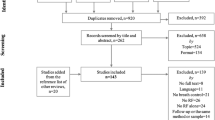Abstract
A new technique for time series analysis, which is a combination of the maximum entropy method (MEM) for spectral analysis and the non-linear least squares method (LSM) for fitting analysis, is described. In this technique, the MEM power spectral density (MEMPSD) is calculated using a very large lag that could diminish the lag dependence of dominant periods estimated by the MEM analysis. The validity of this large lag is confirmed by the LSM, given that the ten dominant MEM periods are known quantities. To validate the MEM plus LSM technique, it is compared with autoregressive (AR) modelling, by analysing heart rate variability under pharmacological interventions (phenylephrine and trinitroglycerine), using 16 young males. The results indicate that the MEMPSD, when compared with the ARPSD, has numerous periods that could reproduce the original time series much more accurately, as revealed by the LSM analysis. However, both the low- and high-frequency powers with MEMPSD and ARPSDs shift in the expected directions in accordance with the pharmacological effects on the cardiovascular system. The implications of these results are discussed from the theoretical and practical standpoints of the MEM plus LSM technique, compared with AR modelling.
Similar content being viewed by others
References
Brown, T. E., Beightol, L. A., Koh, J. andEckberg, D. L. (1993): ‘Important influence of respiration on human R-R interval power spectra is largely ignored’.J. Appl. Physiol.,75, pp. 2310–2317
Burg, J. P. (1967): ‘Maximum entropy spectral analysis’.37th Ann. Int. Meet. Soc. Exploration Geophys., Oklahoma City
Ohtomo, N., Kunimoto, K., Nakagawa, M., Shimamoto, K., Iimura, O. andTanaka, Y. (1990): ‘New method of time series analysis on diurnal variations of blood pressure and heart rate’. 10th Conf. on Circulation, Tokyo (in Japanese)
Ohtomo, N. andTanaka, Y. (1994): ‘New method of time series analysis and ‘MemCalc’’in Saito, K., Koyama, A., Yoneyama, K., Sawada, Y. andOhtomo, N. (Eds.): ‘A recent advance in time series analysis by maximum entropy method’ (Sapporo, Hokkaido University Press) pp. 11–29
Ohtomo, N., Terachi, S., Tanaka, Y., Tokiwano, K. andKaneko, N. (1994): ‘New method of time series analysis and its application to Wolf's sunspot number data,’Jpn. J. Appl. Phys.,33, pp. 2821–2831
Pagani, M., Lombardi, G., Guzzetti, S., Rimoldi, O., Furlan, R., Pizzinelli, P., Sandrone, G., Malfatto, G., Dell'Orto, S., Piccaluga, E., Turiel, M., Baselli, G., Cerutti, S. andMalliani, A. (1986): ‘Power spectral analysis of heart rate and arterial pressure variabilities as a marker of sympatho-vagal interaction in man and conscious dog,’Circ. Res.,59, pp. 178–193
Pomeranz, B., Macaulay, R. J. B., Caudill, M. A., Kutz, I., Adam, D., Gordon, D., Kilborn, K. M., Barger, A. C., Shannon, D. C., Cohen, R. J. andBenson, H. (1985): ‘Assessment of autonomic functions in humans by heart rate spectral analysis,’Am. J. Physiol.,248, pp. H151-H153
Randall, D. C., Brown, D. R., Raisch, R. M., Yingling, J. D. andRandall, W. C. (1991): ‘SA nodal parasympathectomy delineates autonomic control of heart rate power spectrum,’Am. J. Physiol.,260, pp. H985-H988.
Rovelli, A. andVulpiani, A. (1983): ‘Characteristic correlation time as estimate of optimum filter length in maximum entropy spectral analysis,’Geophys. J.,72, pp. 293–306
Schels, H. F., Haberi, R., Jilge, G., Steinbigler, P. andSteinbeck, G. (1991): ‘Frequency analysis of the electrocardiogram with maximum entropy method for identification of patients with sustained ventricular tachycardia’.IEEE Trans.,BME-38, pp. 821–826
Seidou, T. andOhtomo, N. (1985): ‘Maximum entropy spectral analysis of time-series data from combustion MHD plasma,’Jpn. J. Appl. Phys.,24, pp. 1204–1211.
Author information
Authors and Affiliations
Corresponding author
Rights and permissions
About this article
Cite this article
Sawada, Y., Ohtomo, N., Tanaka, Y. et al. New technique for time series analysis combining the maximum entropy method and non-linear least squares method: its value in heart rate variability analysis. Med. Biol. Eng. Comput. 35, 318–322 (1997). https://doi.org/10.1007/BF02534083
Received:
Accepted:
Issue Date:
DOI: https://doi.org/10.1007/BF02534083




